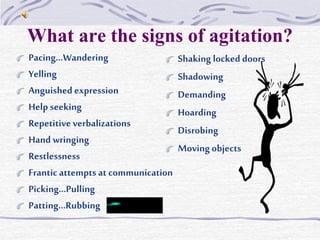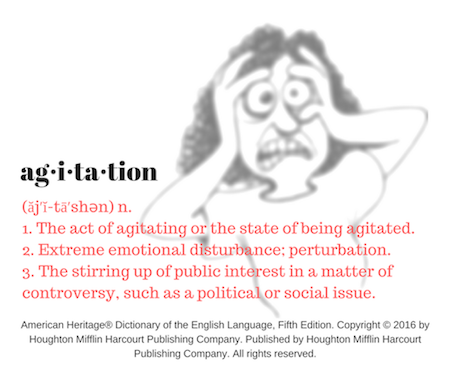Agitation is a term that appears frequently in both everyday language and specialized contexts. Whether it’s used to describe a person’s emotional state or a physical process, understanding the meaning of “agitation” can be crucial for clear communication and informed decision-making. In this article, we’ll explore the various definitions and applications of the word, focusing on its relevance in the United States.

Understanding Agitation: Emotional and Physical Perspectives
In its most common usage, agitation refers to a state of mental distress, restlessness, or irritability. It often manifests as nervous behavior, such as fidgeting, pacing, or difficulty concentrating. For example, someone might become agitated when they are stressed or frustrated, leading them to knock over a glass or wriggle on a seat.
From a psychological standpoint, agitation can range from mild to severe. It may be a temporary response to a stressful situation or a symptom of an underlying medical condition. According to the Cleveland Clinic, agitation can result from imbalances in neurotransmitters like dopamine and serotonin. If left unchecked, it can escalate into more serious behaviors, including aggression or self-harm.
Agitation in Political and Social Contexts
Beyond individual experiences, agitation also has significant implications in political and social movements. In this context, it refers to public protest or organized demonstrations aimed at achieving political change. For instance, “mass agitation against the president” describes widespread public dissent, while “agitation for social reform” highlights efforts to bring about societal improvements.
The Oxford Collocations Dictionary defines agitation as “public protest in order to achieve political change.” This form of agitation is often associated with growing or popular movements, where individuals come together to voice their concerns. Examples include protests against policies, calls for justice, or demands for policy reforms.

Agitation in Scientific and Technical Terms
In scientific and technical fields, agitation takes on a different meaning. It can refer to the act of mixing or shaking a liquid, a process commonly used in chemistry and biology. This type of agitation is essential for ensuring uniform distribution of substances in a solution.
Additionally, in Indian English, agitation is sometimes used to describe an organized walk or march by many people to express support or opposition to a cause. These events are often accompanied by public meetings or demonstrations, serving as platforms for collective expression.

Recognizing the Signs of Agitation
Identifying agitation can be challenging, as it often presents through a variety of behaviors. Common signs include:
- Uncooperative behavior
- Clenching fists or wringing hands
- Difficulty focusing
- Excessive talking
- Fidgeting (purposeless movements)
- Hostility
- Inner restlessness
- Lack of impulse control
- Pacing
- Violent or disruptive behavior
It’s important to note that not everyone experiencing agitation will display all these signs. Some individuals may be aware of their agitation, while others may not recognize it at all. If agitation becomes frequent or worsens, seeking professional help is advisable.
When to Seek Help
If agitation leads to aggression, suicidal thoughts, or violent behavior, immediate medical attention is necessary. The Cleveland Clinic emphasizes that agitation can be a sign of delirium, especially if it’s accompanied by changes in alertness or consciousness. In such cases, prompt evaluation by a healthcare provider is critical.
Moreover, if agitation interferes with daily life, relationships, or work, consulting a healthcare provider can provide valuable insight and support. Treatment options may include therapy, medication, or lifestyle adjustments, depending on the underlying causes.

Conclusion
In summary, agitation is a multifaceted term that encompasses emotional, social, and scientific meanings. Whether it’s describing a person’s inner turmoil, a political movement, or a laboratory process, understanding the nuances of agitation is essential for effective communication and informed decision-making.
For those experiencing persistent or severe agitation, seeking professional guidance is crucial. By recognizing the signs and understanding the potential causes, individuals can take proactive steps toward managing their well-being.
Author Section
Author: John Doe
Title/Role: Journalist and Content Creator
Credentials: With over a decade of experience in writing and reporting, John has covered a wide range of topics, from politics to health. His work focuses on delivering accurate, informative content that resonates with readers.
Profile Link: https://www.johndoe.com
References
Related Articles
Call to Action
Stay updated with the latest news and insights by following our blog and exploring the topics that matter to you. Whether you’re interested in health, politics, or science, there’s always something new to learn.











More Stories
What Is Yodo Para Tiroides and How Does It Affect Thyroid Health?
What is WSET? A Comprehensive Guide to Wine Education
US Trending News: What Are Winter Bones? A Guide to the Seasonal Trend in Bone Health